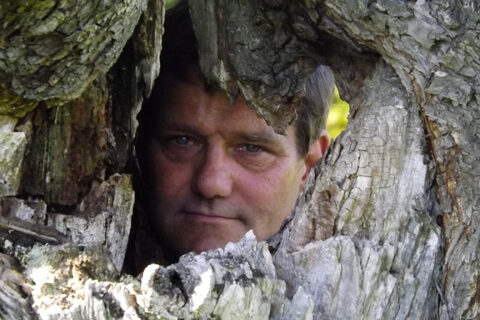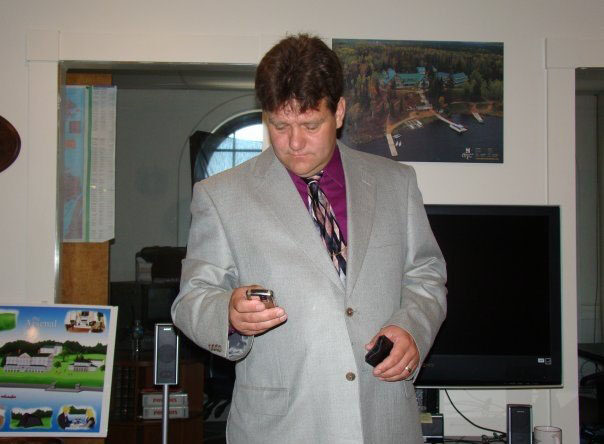Your Donation Helps to Educate Others by Keeping Cannabis Nation News On the Net!

My name is Jeffrey A Benedict, and I am a medical marijuana patient. I use medical marijuana for pain relief. Some of the people who hear this and have no knowledge of me look at me and say “Who is your doctor dude? I need a prescription for marijuana, I am sure I have pain somewhere.”
Some people who don’t know me think I am a wimp and I think that I can handle the pain with an over the counter pill of some sort.
I mean, really! Look at me, do you see any pain? Do those of you who are in pain every day of your life wish you could change colors when you’re in pain? I can see it now. This is the color I am in when I don’t feel pain, and then my body works its way up to deep purple when I am in extreme pain. That sure would help wouldn’t it?
Just for the record, because of the excitement of the day and being fairly well medicated, I would be candy Apple red right at the moment.
Today I am going to take you for a walk through one man’s pain. This man has had pain inflicted on him by well meaning doctors from the day he was born. You will hear how the medical world has changed the way they look at pain, and how pain management has remained the same for thousands of years only to be modified in the last twenty years.
At times you may find what I am talking about embarrassing and ultra personal maybe even T.M.I. I assure you that no one in this room will be more embarrassed by what I have to say than me because I am that one man and this is my life long journey through pain and how the medical world is just now catching on.
It is only open minded doctors like the ones who are here today who are on the forefront of pain management.
The world has been slow to understand pain; granted we have come a long way in the last one hundred years or so (Pernick, 1985, pp. 3-8).
On a summer day in 1862 a Philadelphia laborer named McGonigle took a fall and fractured his ankle. He was then rushed to a hospital, where doctors immediately amputated the man’s foot without anesthesia.
This event occurred a full16 years after a public demonstration of ether anesthesia at the Massachusetts General Hospital had shown an astonished world that surgery could be painless. So it wasn’t until 1846 man found out that cutting parts off the body hurt?
The Pennsylvania Hospital, where McGonigle was taken, had been among the last of the major medical institutions in the United States to introduce anesthetic drugs, but even there ether had been in use for over10 years. Chloroform and nitrous oxide had been in general use for almost as long as ether and all were inexpensive and readily available in 1862.
So why no anesthesia for poor McGonigle? (Who, incidentally, died of shock two days later.) Historically, treatment for pain relief has varied according to the social status of the sufferer, because of the medical world’s relative insensitivity to pain.
McGonigle fit perfectly the model for insensitivity: the man was an uneducated Irish immigrant who had been drinking when he fell (Pernick, 1985, pp. 4, 148-167).
Now jump ahead 106 years The year is 1968 and the attitude toward pain has not changed much (Undermedication by medical professionals: Past. In 1968) Pediatric Experts L.S Wafford and D Allen gave the following instructions to intensive care doctors,
“Pediatric patients seldom need relief of pain after general surgery. They seem to tolerate discomfort well. The child will say he does not feel well or that he is uncomfortable or wants his parents, but often this unhappiness will not relate to pain” (p.133).
These wonderful words of advice were based on these doctors years of intensive care experience, they found that only 26 out of 180 pediatric intensive care patients received pain relief and none had died from the pain, therefore children don’t need post operative pain management.
Five years prior to that pronouncement I was born and I was in pain, I don’t have to remember the pain to know it was there, it was 1963 and I was born with Hypospadias.
Hypospadias is a male birth defect in which the opening of the tube that carries urine from the body (urethra) develops abnormally, usually on the underside of the penis.
In a nut shell the underside of my penis was not developed. The day I was born, I had the first of seven surgeries to correct the problem.
Because as a less than 24 hour old child, I did not state specifically that the reason I was crying was because I was in pain, I was not given any pain relief of any kind after surgery.
This seems like a harsh way to spend your first day of self-sustained life. First they knocked me out with ether, then they cut up the most sensitive parts of my body. When I woke up crying, they decided it wasn’t pain that made me cry it was just that I needed my mother’s touch.
During the Sixties I had six unsuccessful surgeries to repair my Hypospadias, and each and every time, I was refused post operative pain relief. Looking back, I am stunned by how little regard was given to the pain children felt while in the hospital.
As recently as 1977, Eland and Anderson shocked the medical community with their classic chart review in which they studied pain relief administered to adults and children who had undergone similar procedures. They found that for every 34+ doses of pain relief given to adult’s children received less than one and a half doses of pain relief. This was in 1977 not 1877. The war on drugs was over a decade old. Maybe, just maybe, the people who started the war on marijuana didn’t understand pain?
I don’t want you to think that I am able to remember the pain that I felt on the day I was born because I don’t remember anything about the first four surgeries. If I wasn’t told about them I would not even know they had happened.
I do, however, remember the last three surgeries vividly. I remember when, after surgery, and while still in the hospital, the doctors removed the dozen or so stitches from my penis. I was a child and I was not given any pain relief what so ever. I was, however, allowed to look into the bright light above the table. I can still see the face of the nurse that told me “If you stare in the light it won’t hurt.” She was wrong. It hurt no matter how deeply I stared into that lamp.
After tying me to the bed, they continued to pull the stitches, all the while telling me it didn’t hurt. I have vivid memories of this happening after three different surgeries, and believe me it hurt every time. The second time, I asked if there was anything they could do to maybe numb the area, they said, “No!” and told me to “Stare in to the light.”
It was the early seventies when I was at the doctors to have a follow up appointment to my latest Hypospadias surgery. The doctor called it a successful operation. All I had to do was keep my finger over the small hole that remained when I pee and everything would be just fine.
The doctor had only used about half of my foreskin while performing the surgery required to cover the hole and because he was calling the surgery a success he decided the remainder of the foreskin needed to be removed.
Right then and there, in the middle of his office, he pulled out a pair of scissors and proceeded to cut off the reaming half of my foreskin. The scream I made was so loud that they had to restrain my brother in the waiting room.
When the doctor was done he put a Band-Aid on my penis to catch the blood and prevent infections, gave me a lollypop and sent me on my way. As I walked out to the waiting room, I saw that not only was every member of my family pale frightened and crying, every person in the room was pale and the children waiting to be next had a look of terror in their eyes. Yeah, I might have a low threshold for pain, I might even be a wimp.
In the eighties pain relief started to become more humane where as pain medicine was given by a nurse or other care giver when they decided the pain warranted medication, alternately some doctors prescribed meds on a timed schedule in an effort to avoid pain from starting in the first place.
In 1982, M. Angell wrote in the New England Journal of Medicine that a patient must be in the throes of pain before medication is administered because it was the humanitarian thing to do.
Three years prior to that, I was in the hospital again. I had gotten my foot caught in a hay crimper. A hay crimper is a simple machine. It doesn’t have a lot parts. It’s a big metal box that holds two six foot long wheels—one rubber the other steel. The wheels are compressed together as tightly as you can possibly get them and are set to spinning at a rate of somewhere around 25,000 revolutions per minute. The hay is fed through the hay crimper between the two wheels, the water is squeezed out of the hay and the hay flies out of the back of the hay crimper creating nice lovely fluffy aisles of hay.
I won’t go into detail about this incident here but I will tell you that when it happened, I was alone in the field. After I freed myself from the machine I had to walk a quarter of a mile to get help.
After an hour long Ambulance ride, I arrived at the hospital in Denver. They told me they were going to remove the big toe and the two toes next the big toe. Because of the twisting of my foot in the hay crimper in an effort to free myself the big toe was burned beyond repair the bone had started to cook in the heat and had to be removed, the two other toes had flesh that had been burned beyond repair. The only way to fix those toes is to apply thick skin grafts that might require repair every time I stub my toe for the rest of my life. Seeing how I was given Morphine at the clinic before being loaded up in the ambulance I was fairly agreeable the and amputations sounded like a good plan to me.
The first surgery went without complications. Then there was the second operation. While still in the recovery room, I asked for painkillers and they gave me a pill–Tylenol I think. It only cost ten dollars so I know it couldn’t have been Motrin. I never got any relief from the pill so I asked them for something more. The nurse said I would have to wait at least half an hour before they could give me anything more. At the end of the half hour I was in more pain than words can describe. You could have cut off my foreskin now and I wouldn’t even have noticed.
The nurse said, “The surgeon would need to give permission before we can give you anything more at this point” and they couldn’t get a hold of doctor. I was in tears and at my wits end the pain was unparalleled I can’t even come up with an adequate description 30 years later. The next time a male nurse came by I grabbed his arm and then put him in a headlock. Then I told them I would not let him go until they got me something for the pain. Moments later I was out cold.
Apparently, they found something to stop the pain. Later when I came to, I apologized to the nurse over and over again. I felt terrible for doing what I had done, but I would do it again tomorrow if I was in the same situation. I mean really!
Shortly thereafter, I was taken back to my bed in the ICU. When I was in the elevator, the orderly looked at me and said “Things get a little rough down there?” I tried to explain what happened and he asked if I was going to be like that to him. I assured him I would not. He then untied my arms and legs. Up until that moment I hadn’t realized that I was tied to the gurney; it seems they tied me to the gurney when that shot knocked me out.
Later I found out that they were instructed to wait until I was in the throes of pain before giving me pain relief, after all it was the humane thing to do but then again I might just be a wimp with a low tolerance to pain.
Data reveals a significant under treatment of pain in children. In the USA adults receive more than two to three times as many pain treatment doses as children with identical diagnoses. Data shows that the younger a child is, the less likely that child is to receive appropriate pain relief.
Many myths still remain and may be responsible for the inadequate pain management of most children, especially infants and very young children as well as severely impaired children and teenagers. Often children do not receive sufficient pain relief, because their discomfort is different from that of adults.
It is ridiculous to believe, that children’s nervous systems are immature and therefore unable to perceive an experience pain. All available data suggests that those theories are wrong.
While my story should end here, there is more. Six years after my last foot surgery, my body turned on me. I spent 15 years going to doctors. I took different medical tests. These tests included muscle tests where people stuck metal things in my muscles with doses of electricity. There were all sorts of crazy tests and muscle biopsies. Still nothing was conclusive.
Twenty years after seeing the first doctor about the muscle pain, I was feeling at my very worst. My wife drove me to the doctor’s office right then and there and said, “See! This is what I am talking about.” The doctor took one look at me and said it’s your thyroid. My thyroid was tested and found to have a TSH that was the highest ever recorded in a living human.
It took another five years before another doctor discovered that I had Hashimoto’s thyroiditis or chronic lymphocytic thyroiditis. It is an autoimmune disease in which the thyroid gland is gradually destroyed. In laymen’s terms, my thyroid does whatever it wants, whenever it wants. Some days my thyroid works double what it should some days it runs perfect and other days it does nothing at all.
The twenty years that it took to find a cause and a way to stop the damage caused irreparable harm. The best anyone can tell is that my muscles were dissolving from the inside out slowly but surely.
My muscles will not repair themselves, but the damage has stopped getting worse and will remain this way as long as I control my thyroid. The pain is constant and at times it is unbearable yet I find solace in the fact that it has stopped getting worse. It was such a hopeless feeling when the pain just got worse and worse and all the doctors could do was give me stronger and stronger pain killers.
It hurts just moving my arms in the morning. Taking the covers off my body is painful. Standing on my legs is like jumping on top of two very long needles that go from the floor through the heel of my foot. It shoots through my calf muscle exploding in my thigh and then piercing my hip. I can feel every bit of that needle as it comes up from the floor to my hip. Every single inch of my muscle is screaming as the pain tears through it.
When the pain would not go away, I had to agree to start taking painkillers. As time went by, we worked our way through all of the typical painkillers. Basically we tried every single pain killer available at the time. After several years we finally worked our way up to morphine.
It was during the time I was on morphine that my wife woke me one night and alerted me to the fact that that our deck was on fire and it was raging out of control not 3 feet from me. I was sleeping soundly until she started screaming. After that I refused to take the morphine, I started taking OxyContin.
More and more every few months, much to my surprise doctors hand out OxyContin like candy, or so it would seem. Just like when I was taking morphine during the OxyContin years I was barely able to work if I could work at all.
I decided that if I was going to hold a decent job that paid any money that I was going to have to get off of the OxyContin so I could concentrate on one thing for more than 15 seconds at a time. It was harder for me to get doctors to support me, coming off of the OxyContin then it was to get doctors to give me OxyContin.
It got to the point I had to personally check myself into the drug rehabilitation hospital, because I thought I was going to kill myself and the doctors would not help me other than to give me more OxyContin. I finally got myself off of the OxyContin; but I was still in pain. I went and found another Dr. who specialized in pain management. I explained my situation to him and after he went through my twenty years of medical records he asked me, “From the first time that you had this checked out to the second time you had this checked out you waited five years. Were you still in pain during that time?” I told him I was but it just wasn’t that bad because I didn’t feel it that much. Then he asked me if I was taking anything for pain back then. I said I wasn’t so he asked me if I was smoking pot back then, I said yes I was, quite a bit in fact.
He then asked me if it had ever occurred to me that the reason I didn’t hurt so much bad back then was because I was taking painkillers. The fact I was smoking marijuana was why it didn’t hurt that much.
You see when I grew up I quit smoking marijuana and doing all of the drugs that I had used unwittingly to take away the pain. I grew up and stopped taking the very pain killer that was helping me not feel the pain and still allowed me to be a full functioning adult. My doctor then discussed with me the possibility of becoming a medical marijuana patient.
I am now a medical marijuana patient and my pain is mostly under control. I still have bad days, and because medical marijuana is expensive and hard to obtain legally I don’t always have any.
When I don’t have any medical marijuana I am a mean, crotchety, paranoid, angry, hard-to-deal-with asshole.
Pain causes me to be someone I don’t like to be. The pain causes me to treat my family the way they do not deserve to be treated. Marijuana gives me relief from the pain so I can treat people the way they deserve to be treated.
Then again I might just be a wimp with a low threshold of pain. I’m Jeffrey A Benedict thanks for listening.
Submitted by: Jeffrey A. Benedict





